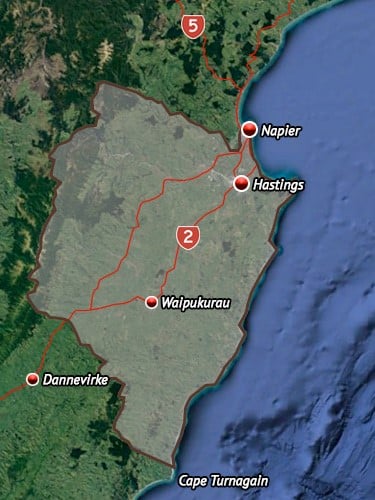The hapū and marae of Heretaunga Tamatea Settlement Trust have also placed rāhui in their rohe, as shown on the map below.
These rāhui are supported by Ngāti Kahungunu Iwi Incorporated, DOC and Hawke's Bay Regional Council.
The constant re-sedimentation of habitat and spawning grounds post-Cyclone Gabrielle continues to threaten the ability of whitebait species to rebuild stocks for future sustainability.

As well as affecting whitebait, intensive damage across all catchments is a hazard for river users and includes riverbank instability and exceptionally turbid waters.
DOC's Hawke's Bay Operations Manager Tryphena Cracknell says recovery work is underway at some sites.
"The rāhui should come as no surprise to our community and fishers, due to the state of the rivers and banks post-Cyclone Gabrielle," says Tryphena.
"In fact, many members of our fishing community have raised concerns about the upcoming season with us and are in support of this rāhui."
This decision is based on the need to recover the environment post-Cyclone Gabrielle, and to maintain and enhance a sustainable fishery amidst the significant sediment and environmental disruption to spawning.
All parties involved agree this rāhui is the best way forward for fisheries and the communities.
About rāhui
A rāhui (physical and spiritual protection mechanism) is a tool to manage human activity around a site where there has been loss of life. It sets a temporary prohibition on activities around the rāhui area and limits access for that period.
By placing a rāhui over the area it:
- acknowledges the death and is a way to express our sympathy to the whānau of the deceased
- ensures that safety mechanisms are in place
- rovides time for tapu (sacredness) to dissipate following the death.






